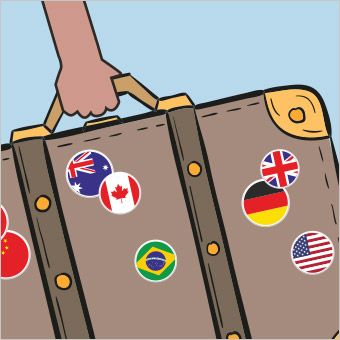Yes, Singles Day is big. Big enough to entice 40% of Chinese consumers to purchase products from international sellers.
But if you didn’t act in time to get in on this year’s Singles Day action, take heart. There are still plenty of other opportunities to tap into the world’s largest e-commerce market while you wait for the big event to roll around again.
China’s e-commerce industry has been booming ever since Alibaba Group filed for its initial public offering (IPO) in the US back in 2014, with cross-border retail sales projected to reach $199.26 billion by 2022.
As the world’s largest e-commerce market, China offers an abundance of retail opportunities to US brands and retailers. And thankfully, the Chinese calendar is marked with peak spending seasons when online shoppers are likely to be searching for American goods.
Here are three that top the list.
Q1: Chinese New Year
The turn of the Chinese calendar, which falls in February, is arguably the biggest holiday season of the year in China. Westerners often liken its prominence and proliferation of sales to the end-of-year spending sprees in the US. It’s like Thanksgiving, Christmas and New Year’s Eve all rolled into one, with many consumers taking week-long holidays to celebrate.
In 2018, overall retail sales leading up to the Lunar New Year reached $146 billion. While much of that spending went toward travel and entertainment, some of the most popular items fell into categories like electronics and luxury goods. Floor-sweeping robots proved particularly popular, as did foreign fashion.
In fact, 63% of products purchased for the Year of the Dog came from international sellers.
Keep in mind that hundreds of thousands of factories and businesses in China close for up to two weeks to give employees enough time to travel home to rural areas. With the shutdown and lack of employees come congested shipping and delayed packages, so advanced sales are key.
Q2: Children’s Day
Children’s Day is an international holiday celebrated by various nations on different days throughout the year. In China, it’s recognized in June and is a great opportunity for selling toys and children’s apparel.
Q3: Autumn Moon Festival
In China, a full moon is believed to be a symbol of peace, prosperity and family reunion. The Autumn Moon Festival is one of the most important festivals in Chinese culture.
This annual event, usually falling in mid-September, is a thousand-year-old celebration where families gather to partake in activities dedicated to celebrating the moon. It’s a great time to promote small gift items, which tend to sell well throughout the festivities.
Is China Right for Your Business?
There’s no denying that China’s e-commerce market is strong, and that opportunities abound beyond Singles Day. But it’s important for brands and retailers to carefully evaluate each opportunity. Before leaping headfirst into selling internationally to Chinese consumers, it’s worth taking the time to consider the following factors:
- Demand. Are products like yours selling in the region already? Is there a basis for competition, or can you see a gap in the market? Search the Chinese marketplaces, as these will likely give you a good overview of demand and supply.
- Supply. Check your product supply to ensure you have enough inventory to cater to the increased number of potential consumers in the market.
- Data. Do you currently receive orders or website visits from Chinese consumers through your other channels? While a lack of current buyers may not indicate your future performance, if there’s already demand for your products, this should give you an idea of which ones will perform best in the region.
- Deliveries. Speedy delivery is just as important in China as it is to US consumers. Many shoppers expect goods delivered within 72 hours of purchase. Can you get products there quickly?
- Complexities. Is your business prepared to take on the added financial burden of selling in China? Be mindful that you’ll likely need to partner with a third party to deliver your products and navigate the fluctuations in the exchange rate.
The above list may seem daunting at first glance, but advancements in recent years have made it easier than ever to take an e-commerce business across borders.
At Rithum, for example, brands and retailers can leverage an integration with VoyageOne to list products on Liking, a Tmall Global marketplace that sells goods from US merchants to Chinese consumers. Because VoyageOne handles things like customer service, returns, logistics and marketing, it can be a great place to begin promoting products during peak selling seasons. (Learn more here>>)
And as the list above proves, from February to November there are plenty of opportunities to do just that.



